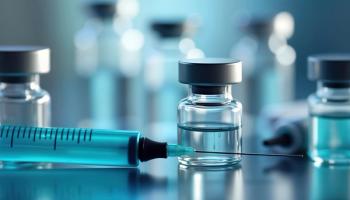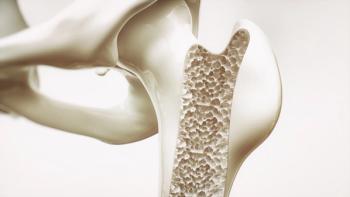
Talking Biosimilars With OneOncology’s Dr. Jeff Patton
The leading community oncology practice partnership has been an early adopter of biosimilars, and a trouble-shooter for hurdles with payers.
The community oncology practice partnership OneOncology doesn’t just use biosimilars in cancer care—you could call them cheerleaders. More than a year ago, the Nashville-based oncology network issued a
Managed Healthcare Executive®: Can you characterize the uptake of biosimilars across OneOncology, using the metric you view as the most meaningful?
Jeff Patton, MD: We use market share percentage. In multiple classes, there are multiple biosimilars to choose from, and then there’s the originator. And so, let’s say there’s five drugs—we’ll pick one, and then look at the percentage utilization of the one that we've chosen. And so for Mvasi and Kanjinti we’re above 70%; for one of the Rituxan biosimilars we’re at about 60%. On the supportive care side, it’s been less so, because for the largest drug that’s used, Neulasta (pegfilgrastim), Amgen came out with an on-body injector such that it’s more convenient for patients. And so, we’ve done less conversion there. But on the therapeutic side, we're over 50% and in certain classes over 75%.
MHE: How is the uptake shifted over time? You’re at a pretty high percentage now, but how long did it take to get there?
Patton: We started in July 2019, so it’s been about 15 months about 15 months. It probably took us four or five months to get to 50%. And then it's been slower after that. The early converters are easy, but we're up at the 75% mark on those two therapies (Mvasi and Kanjinti). It really takes it takes time and getting used to the biosimilars, but our practices have embraced and adopted both, so it works quite, quite well.
MHE: When you discuss biosimilars with patients, what’s that conversation like?
Patton: It depends on the provider. I often do the analogy to generics. Everybody's used to generic drugs. And so it's similar to a generic, [although] it's a little more complicated because these biologic drugs are more complicated and more difficult to make. But it's the same concept—that it's the same drug and same efficacy and toxicity at a lower cost. And so there's a chance that your out of pocket [cost] will go down. It certainly will cost the insurers less, and it will save the system money and we wouldn’t be prescribing them if we didn't think it was just as good.
MHE: How is payer support for biosimilars?
Patton: It's been good except for one caveat: the payers will go to manufacturers, and let's say there are four or five biosimilars [for one originator]—they will put out a bid, and then just choose two of those biosimilars based on a financial relationship with the manufacturer. And if those aren't the ones your practice picks, and you say, “Look, we've already adopted biosimilars, and now you're trying to get us to change to a different biosimilar,” we don't think that's fair.
And so, we've had that discussion with Cigna. At Cigna there was a national coverage [decision], where we were at 70% to 75% market share of a biosimilar. So, we’re already saving them money, we haven't asked them for anything and then they're telling us to change to a different product. We said, “You know, this doesn't work for us.” …
If you think about it, in about 12 months, we think there'll be 18 biosimilars to replace three originators. So that means you've got to carry 18 drugs in your drug cabinet to replace three. And these three have up to 25 indications. So, you've got to have that many different regimens built into your electronic data ordering (Patton computed this would total 450 different electronic orders). It's insane. It's logistically impossible. And we explained that to them. And it took a while for them to hear it, but they finally heard it.
MHE: That sounds like your biggest hurdle that you're working through. But it sounds like you're making major progress.
Patton: Yes, we are. And we're trying to say, let's be collaborative, we're saving you money. We've embraced it. What so why don't we do this together instead of gumming up the works for each other.
MHE: So, it sounds like biosimilars are making a difference in the bottom line. Can you quantify it?
Patton: It’s about 15% decrease in total cost. As you know, we're part of the Oncology Care Model. That’s close to half of our patients. And so we hope to see some shared savings from the government based on our initiatives to try to decrease costs for both of us.
MHE: Assuming you continue to make headway with the payers, on the administrative side, then that will continue to be both the drug savings and the administrative savings, correct?
Patton: It’s interesting. There’s a lot in the press about drugs cost too much. And we agree with that. But providers sometimes get blamed—we’re just going to use what the best drug is. And if it costs more, we're still going to use it, and we don't set costs. But this is one case—and I've had this discussion in several interviews—that this is one scenario where we as providers can actually make a choice that saves money, and we're choosing to do it. So stop blaming us for the drugs that cost too much when we don't set the price.
Newsletter
Get the latest industry news, event updates, and more from Managed healthcare Executive.






















































